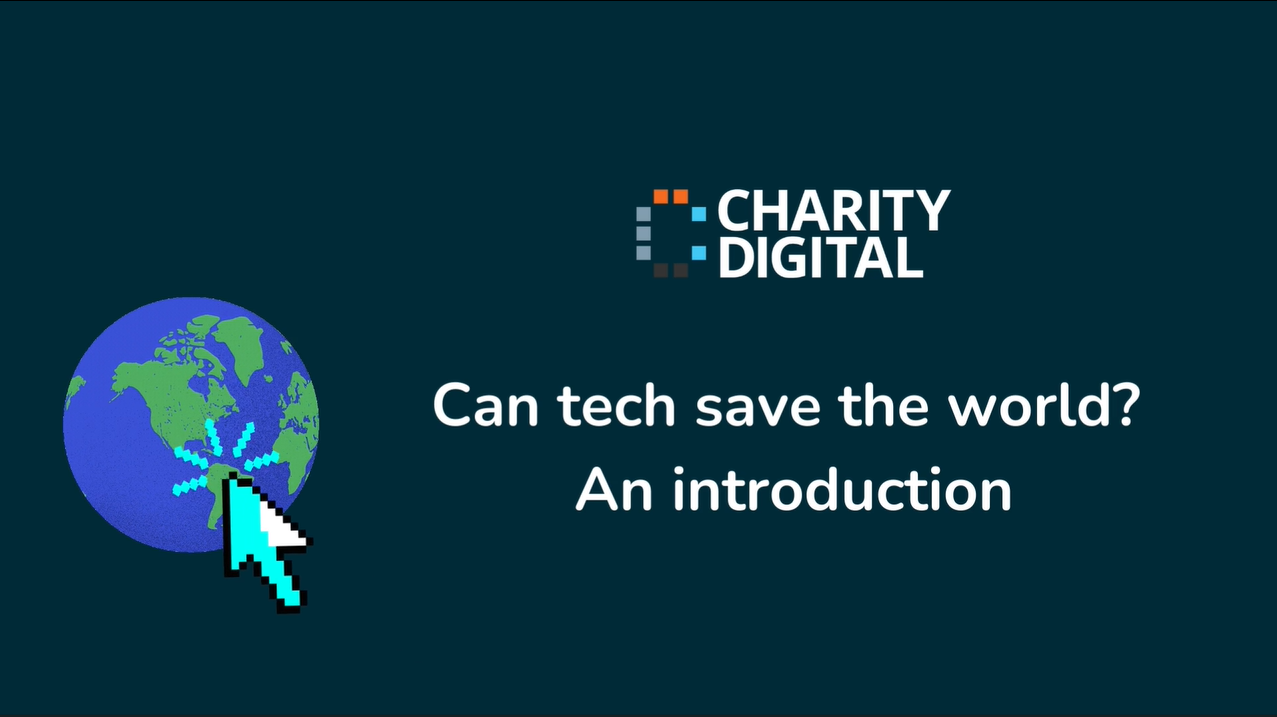Insights
INSIGHTS
All Topics
My Account
Ten ways to ensure your charity is sustainable
03 Jan 2025by Ian Allsop
We look at ten key areas that should be considered in order to maximise sustainability for your charity
Sustainability is about planning-ahead, while allowing the space to be reactive when required. A greater use of digital technology can facilitate this by simplifying processes.
But what exactly do we mean by sustainability, in a financial context? While there is no one agreed definition, it can perhaps best be understood as persevering: when the core work of an organisation can continue, even if an element of key funding is withdrawn.
Put simply, it is about whether you can be confident about supporting your beneficiaries in the long-term.
Indicators of financial sustainability include strong stakeholder relationships, diversified funding, sufficient cash, realistic and justifiable levels of unrestricted reserves, robust risk management, and awareness of overheads.
For many small charities, sustainability can come down to capacity, especially for those without dedicated financial expertise. Our research shows that 38% of the staff involved in the finance function of UK non-profits lack confidence across all areas of finance, which contributes to relatively low Organisational Financial Literacy.
Insufficiently detailed financial records, poor or non-existent impact reporting, and a lack of financial planning affect transparency and accountability and the ability to apply and compete for funding, especially in the COVID-19 financial landscape.
Ultimately, all of this can negatively impact the sustainability of a charity and its capacity to serve its beneficiaries. While technology can take some of the strain out of manual inefficiencies and facilitate meaningful analysis and understanding, an awareness of the context in which it is being used is still vital.
To help organisations develop greater understanding of sustainability, here are key areas to focus on:
1. Income generation
This may seem an obvious starting point, and there is a good reason to start here. To sustain its work, a charity must be able to generate sufficient income to cover costs. Even small volunteer-led organisations will require enough funds to cover non-staff overheads and key activities.
Income can come from numerous sources, including trusts in the form of grants, public fundraising, commissioning for contracts from statutory authorities, investments, and trading. Approaches to generating income from as many different sources as appropriate need to be supported by marketing activities aimed at connecting to supporters, donors, and funders.
2. Impact focus
Income is essential but does not constitute an end in itself. Never lose sight of why you are generating funds. Instead, focus on more fundamental questions. What are you trying to achieve? What outcomes are you aiming for? What is your desired impact?
Consider whether what you are doing has made a sufficient difference compared to what would have happened without your organisation’s activity. Is what you are doing complementing and enhancing what is offered by other organisations?
Without sufficient impact it is unlikely you will be able to sustain the income generation required to fund charitable activities. Being able to demonstrate this impact through measuring and reporting is therefore clearly important, although some metrics for doing so are admittedly more tangible and easier to work with than others, such as quantifying what Social Return on Investment (SROI) your charity represents.
3. Strategise for sustainability
Income and impact are vital. As such, these are typically the first areas a new charity will focus on. But they are unlikely to sustain the organisation long-term on their own. They need to be viewed in the context of strategy.
It could be argued that strategy should be the starting point from which everything else flows, especially as sustainability is in itself a key element of any strategic plan.
The impetus to start many voluntary sector organisations is passion for a cause. This passion is tremendously important: it is what gives a charity a unique perspective on the world we live in. But passion alone won’t offer sustainability, particularly if it leads to growth into a larger and costlier organisation. Passion should be harnessed within an overall strategy designed around the impact you want the charity to make.
A charity requires clarity about what it is trying to achieve and how it will do that. Awareness of the things you are choosing not to do is as important as understanding what you are doing. This can help give the organisation focus and help it avoid getting distracted. You can’t do everything. It is best to concentrate on what you can and do it to the best of your ability. Align the strategy with your charitable mission and resist any temptation to drift away from that.
4. Business planning
Business planning typically follows on from strategic planning and is vital to underpinning strategy and achieving your mission. Business planning is as applicable to charities as it is to commercial organisations.
Business plans aren’t just about money. A comprehensive plan will outline key future objectives and activities, and identify the actions needed to achieve and fulfil them, as well as the resources (particularly people) and facilities required.
This should be supported by a financial plan, which will outline the costs of activities, and the income needed to cover them. As well as helping you to plan for future major costs (building refurbishment, new vehicles, etc.), such budgeting makes it easier to control general costs by providing a framework within which to measure them.
5. Cost control
Some people perceive cost control as boring, but it is incredibly important – dull but worthy. At its most basic it can be summed up as the need to spend less money than is coming in. As charities grow, cost structures become more complex and this can become increasingly challenging to manage.
While a small organisation might initially work on a hand to mouth basis — raise some income and then spend it — once there are employees and/or fixed overheads to consider, there is a need to plan for these regular costs. The bills will still need paying regardless of income. If income reduces, you will need to reduce costs too.
While an effective business plan will help mitigate this, there needs to be an ongoing focus on identifying and eliminating waste. Ensuring value in procurement is important too. It is imperative that you do not simply cut back on all costs. Too strict controls may mean not spending money in key areas which can compromise service delivery and undermine fundraising efforts.
6. Cash flow
Cash flow issues are the biggest cause of failure for many businesses, and the risks for charities are no different. While balancing costs and income on an annual basis is important, this is not enough to guarantee cash flow and solvency. Timing is key.
For example, capital expenditure can deplete cash – even when the impact and the allocation on the Statement of Financial Activities (SoFA) is spread over multiple years. Grants may be paid in arrears, and there can be delays in commissioners paying invoices. This can have a major impact on cash flow and may result in a charity running out of cash and therefore becoming insolvent.
Having a well-thought through and regularly monitored financial plan will make cash flow management easier.
7. Diversification
While nurturing a funding relationship can enable a charity to dramatically increase its impact, over-reliance on one funder or form of fundraising can be very damaging. The eggs in one basket metaphor has been made tellingly visible by the pandemic, where face-to-face and physical event fundraising ceased virtually overnight.
While this new reality has triggered fantastic innovation and new ways of thinking, a broader base of funding clearly makes it easier to pivot and adjust to new circumstances.
Although there may be no hard and fast rule, one view is that 20% should be the maximum amount of funding a charity should obtain from any one source. If you are heavily reliant on one funder, understand and plan for how you can quickly reconfigure costs or find new funding if that source suddenly dries up.
8. Culture
As well as the technical, procedural aspects of financial management, and accounting, it is important not to forget “softer” elements, which are vital to the success of any organisation.
This is where culture comes in. It is about an organisation’s beliefs and values and is characterised by behaviour throughout an organisation. This is especially important for charities – while a commercial business may buy loyalty through financial incentives, a charity can rarely do this.
A positive culture is vital to build loyalty and commitment from supporters and ensures impact is delivered. A negative culture, however, can be particularly damaging in a sector where there is a greater imperative to be fair, equal and diverse. The risk of the harm any failings can have on public support and trust is considerable.
Remember that culture is not just about how an organisation is perceived externally, but also about how staff and volunteers are treated, which will help determine whether they reflect and influence the values your charity is trying to manifest.
9. Leadership
While some of the best practice and procedures mentioned already need to be embedded across an organisation, leadership is vital in achieving this. The Charity Governance Code says that strong and effective leadership helps the charity adopt an appropriate strategy for effectively delivering its aims.
It also sets the tone for the organisation, including its vison, values, and reputation. Leadership is also important in providing day-to-day guidance, ensuring direction is maintained, and that distractions are ignored.
Communication is a vital part of leadership, be it from trustees setting strategy or senior managers to staff and/or volunteers on an ongoing basis. Everybody needs to be kept updated and fully aware of what is going on. Strong communication and leadership are also necessary to prevent data siloing, and to ensure the transparency and efficacy of all financial processes.
10. Infrastructure and tooling
The previous nine points all outline areas which a successful charity needs to focus on in order to ensure sustained effectiveness. All of these will benefit from the use of appropriate technology infrastructure and solutions. For example, productive income generation will be enhanced by the right CRM and fundraising software.
The use of applications such as Zoom and Teams will remain essential to the day-to-day communications and running of many organisations that adopt a remote or hybrid working model.
The primary tool to enable progress towards sustainability is financial software. While a simple business plan might be developed in a spreadsheet, it is difficult to monitor performance against the plan without the right tools. Cost control and cash flow analysis are key parts of financial software, as is the analysis of funding stream diversification and reliance.
Greater Organisational Financial Literacy and understanding of the areas outlined above can be an invaluable benefit, as can the use of digital technology to maximise the efficiency of processes. But they must come from an approach to sustainability grounded in strategy – looking ahead rather than firefighting.
COVID-19 has understandably meant charities have had to think on their feet and react to circumstances both out of their control, and nigh on impossible to plan for. But it also provides an opportunity to view sustainability in a new light as digital ways of working come to the fore.
Find more resources
Find more charity finance resources at the NPO Success Hub
Ian Allsop
More on this topic
10 Mar 2025by Kellie Smith
How charities can share office space and infrastructure
06 Feb 2025by Laura Stanley
Webinar: From legacy to leading – How to switch to a new finance system stress-free
Related Content
Recommended Products
Related Videos
06 Feb 2025by Laura Stanley
Webinar: From legacy to leading – How to switch to a new finance system stress-free
Our Events
Charity Digital Academy
Our courses aim, in just three hours, to enhance soft skills and hard skills, boost your knowledge of finance and artificial intelligence, and supercharge your digital capabilities. Check out some of the incredible options by clicking here.

























